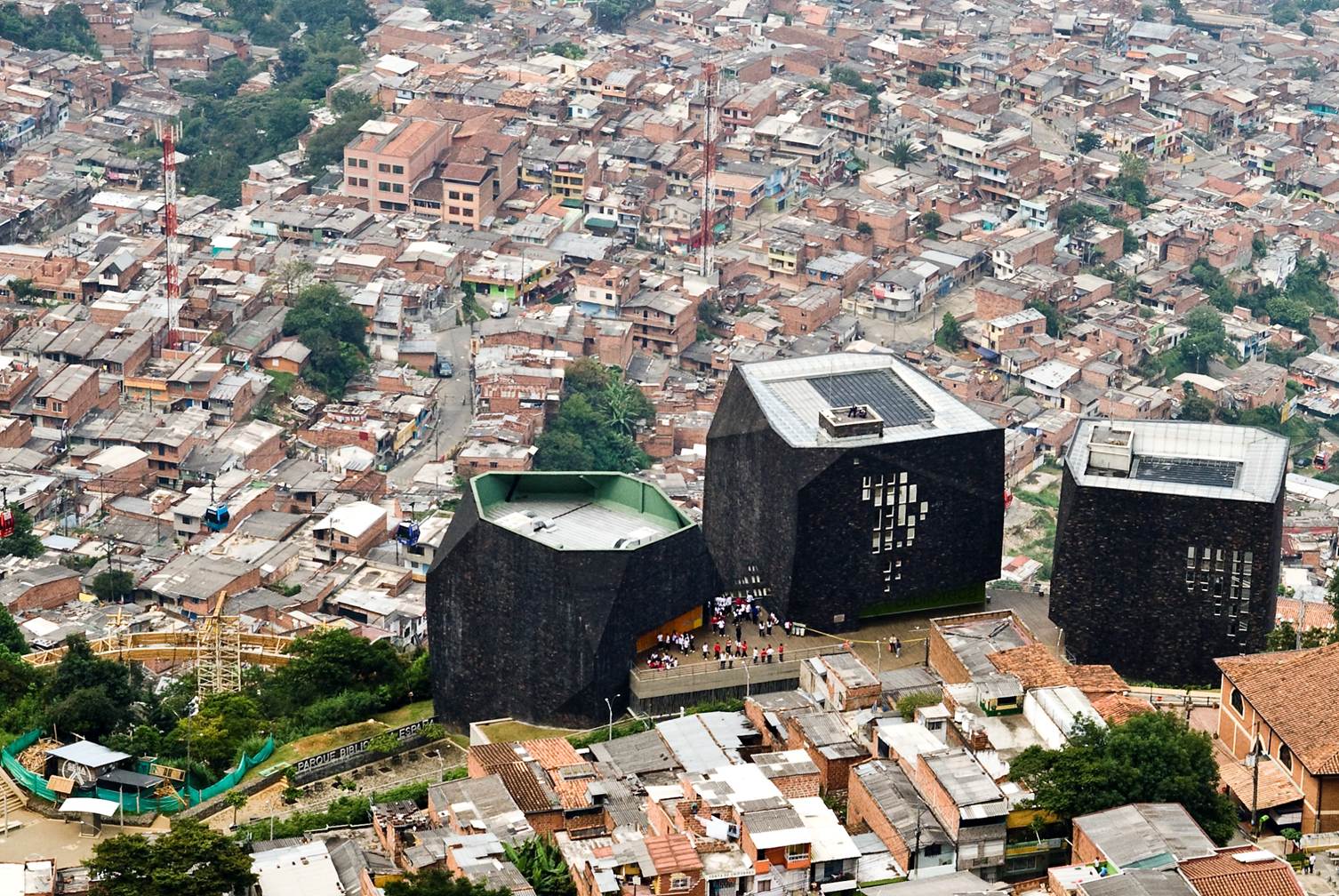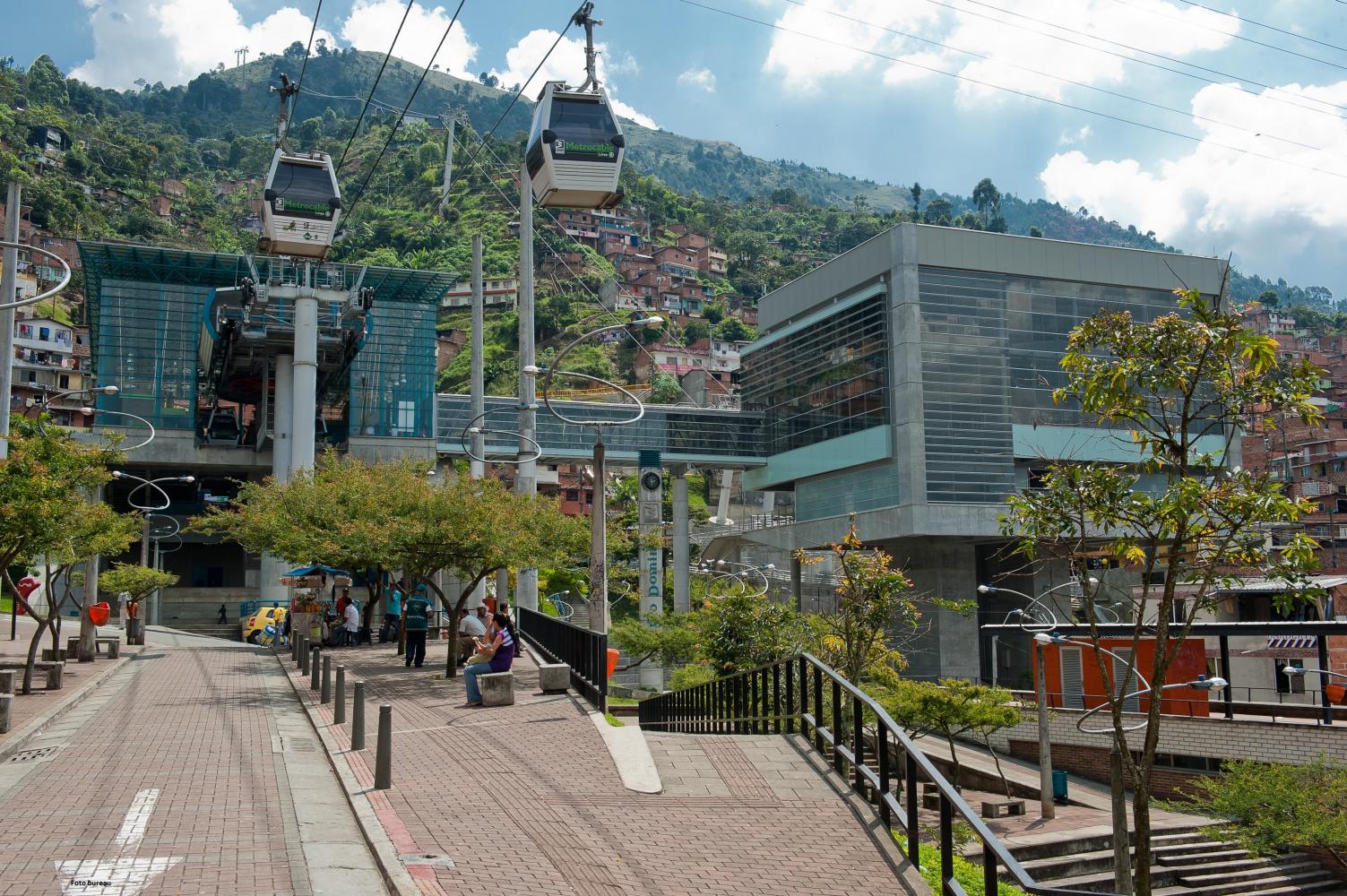Medellin: A Creative City
An Unusual BloG Post...
Todays blog is an article first published in 2009 in a book, Creative City Perspectives, edited by Ana Carla Fonseca Reis and Peter Kageyama. The article was written by Jorge Melguizo and translated by Ana Carla Fonseca Reis and is republished by kind permission of the latter. Although the article is almost a decade old, it is a helpful starter for looking at Medellin, a city which has innovatively used culture to shift from its violent and challenged past to one where it is seen as a model of "innovation and development". This is due in no small part to significant investments in the development of its people, more especially through culture. It has a strong participatory governance ethic and involves its citizens deeply in the democratic process. Its cultural programs are varied (the video embedded provides an update to its work) and in 2014 $5.5m dollars was set aside for culture in four areas - using culture to foster better coexistence, providing artistic training to further creative expression, supporting memory and heritage including oral history programs and building on both tangible and intangible heritage, and lastly strengthening cultural networks through training and support. This work complements significant capital investment projects done to improve public transport for its most marginalized publics, which included building public spaces and libraries at key transport nodes, as well as other cultural infrastructure.
Building a Creative City
Medellin is the second largest city in Colombia. It has 2,300,000 people (in 2009), and together with 9 other cities it makes up a Metropolitan Area of 3,500,000 inhabitants. Back in 1991 Medellin was considered the most violent city in the world, with 381 violent deaths per 100,000 people. The majority of these casualties were young people killed by guns. Medellin was then directly associated to drugs and violence. Today Medellin is no longer the most violent city in the word, nor even in Colombia or Latin America. The number of violent deaths dropped to 10% of what it then was. They are still too many, each death a scar in the city’s soul. However, currently Medellin is synonym of transformation, transparency, education, culture and optimism. Which words would we choose to represent the city in the future? Opportunities, inclusion and equality. We have already shown that this is possible.
In the past years Medellin turned into a positive reference for many cities in the word, who are now turning their eyes to what we did and how we did it. They ask us what our ‘creative idea’ is. We answer it is not that much what we created, but rather what we believe in. In other words, our creativity lies in our commitments and in our passion for making our dreams come true. We believed it was possible to change our way of doing politics and governing the city. And we’ve made it happen through a civic movement - independent, made of people coming from NGOs, the civil society, the community organisations, the universities and the private corporations, with no experience whatsoever in politics. We won the last two elections against the traditional parties and everything they represented. We were told we were insane, but we believed it was possible. It took us five and a half years governing the second city of the country, putting budgetary focus on public education and culture. Once again we were told we would fail. We were told people expect their local governments to give immediate results, while culture and education pay off in the long term. We believed it was possible to offer short term results and the evidences of it are all around the city. Especially, it goes without saying, in the poorest areas, those recurrently abandoned by the State.
We believed it was possible to join forces with the civil society and the private sector, to push forward our projects for a new city. Today, Medellin is ahead of the country in terms of public-private trust. Recovering the trust on the public sector was possibly the most important result of these two mandates. Books everywhere, social mobilisation to make education an aspiring target for youngsters, social urbanism (every single brick we build must have a social result), fostering of cultural creation, real institutional strengthening and of citizens participation, consolidation of citizenship, recovery of self-esteem – lost after years of violence – awareness of the collective task, generation of dynamic and diverse answers, in a vibrant and intense city. These are the strongholds of the new Medellin, now a bubbling, vital, different, surprising and surprised city. And the key has simply been, BELIEVING it was possible. And making it possible. Our creative idea in this new Medellin is ‘to believe’.
Santo Domingo Library Park
The Role Played by Tourism.
Medellin wasn’t a city of international tourism, with the one exception of the 1970s, when it became a preferred spot for health treatments for people coming from the Antilles and Central America. At a national level, the Medellin of the mid-20th century was a reference of trade, fashion and leisure. It all went lost, after years and years of violence. The hardest years brought us a new kind of ‘tourism’: that of reporters from all different countries, looking for breaking news on drug dealers and deaths. And also of a few ‘violentologist’ coming after the mecca of violence, an ideal laboratory for their academic works.
Parque Explora: An Interactive Science Museum
The transformation made us a tourism destination. In the past five years, a solid flow of business tourism brought us people from different places, especially in Latin America. The city hall also worked hard to make Medellin the site of big international events, which besides tourism can put us in the world map for reasons not related to violence. Such was the case of the meeting of Academies of Spanish Language of all Ibero-America, the General Assembly of the American States Organisation, the Assembly of the International Development Bank, the South-American Games, the Ibero-American Congress of Culture, the Ibero- American Architecture Biennale and many more who agreed to be hosted in Medellin because of what we’ve been doing in the social, education and cultural fields.
We’ve also conquered a very important place in leisure and family tourism at a national level. People are visiting Medellin to check out on this city, to see what was done, to take the cable cars, to enjoy an effervescent cultural programme, to know the new landmarks of culture and entertainment: the library-parks, the Parque Explora, the Botannical Garden, to mention but a few. This new tourism supported the construction of 30 four and five-star hotels. We now have three times as many rooms as we did six years ago. Tourism also generated high quality jobs - in a sector virtually unthinkable in the recent past. The growth in restaurant business shows a shift in the way we are seen and see ourselves: from the very few traditional restaurants, we now have a vast and diversified number of traditional, international and fusion restaurants.
The Botanical Gardens in Medellin/Joaquin Antonio Uribe Botanical Garden. Entrance Pavilion.
Looking forward: how can we avoid the increase of social inequalities.
The words opportunities, inclusion and equality are the North of our compass and the essence of everything we do in education, culture, social urbanism, job generation etc. We are not working on a city image transformation model. The transformation in progress in Medellin is based on a shift of the object, not of its image. Everything we do in Medellin from a public perspective needs to bring results in terms of conviviality and inclusion. These are our two main challenges. Take public education, for instance, which reaches 79% of the students in the first and second education levels. In the last 35 years, it was weakened and bad quality.
Lack of good education became an exclusion factor and a barrier for better opportunities. Public investments in public education need to increase the competitiveness of these 79%, so they can play the same game of the 21% who can afford good private education. We’ve made it possible through a local education fund of more than US$75 million. It is used as a credit tool for those willing to study in any of the 32 public and private universities in Medellin and also to grant around US$500 per semester to the poorest students, for bus tickets, books and personal expenses (in Colombia, the minimum salary is around US$240 a month). This can be paid in good school performance and social work for the city.
Santo Domingo Transport Interchange
We managed to put the best of culture at reach of the majority: the four big city museums, all of them private or mixed foundations, grant free entrance all over the year for the population. In the case of the biggest museum, Antioquia, free entrance applies to 90% of the population: those coming from the three poorest socioeconomic levels (out of six), those younger than 12 and older than 60 of all levels, students and handicapped. As a result of this free entrance programme (not for free, actually, as the city hall pays for the tickets), we increased museum attendance from 62,000 to 550,000 visitors to the Antioquia, from 5,800 to 188,000 in the case of the Modern Art Museum and from 30,000 to 1,358,000 to the Botanical Garden. Once in a month, during ten months a year, the 22 theaters of the city – all we have – grant free entrance to the community.
Since December 2007 we also manage a Municipal Theatre, an old private institution where the seven weekly performances are free. We have more than 2,000 broadband computers for free use at libraries and cultural centres. And one computer for every 17 students in all public schools. A long list of opportunities for the majority, making it clear that transformation is made through structural facts and not through city make-up.
All images used in this blog were sourced off the internet.
Additional Resources
Culture Trip has a list of top ten galleries to visit, more information on museums and background to key neighbourhoods, including a recommendation to visit Comuna 13, a once dangerous area and now "home to a burgeoning and creative street art scene and a popular spot for graffiti tours"
Two important arts collectives in the city worth checking out are Plato Hedro and Casa Tres Patios, who push the boundaries of socially engaged practise.





